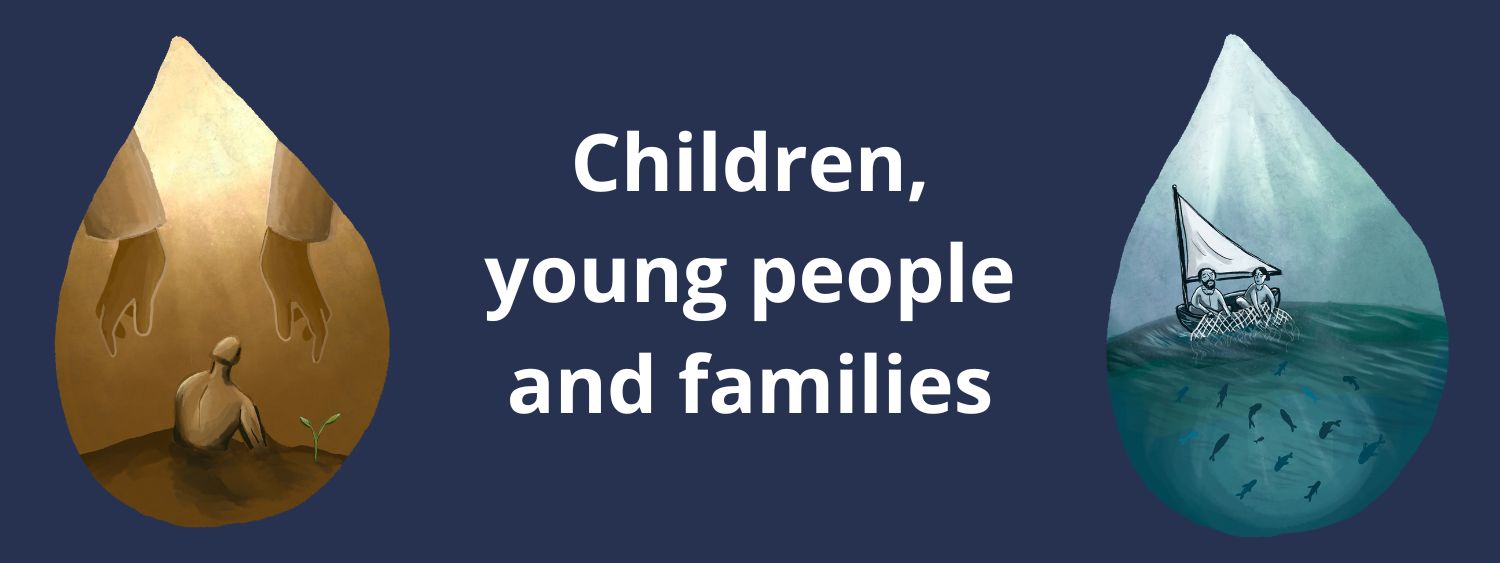
One of the brilliant things about God is that we are invited to come to him any time, any way, any place – and you are invited to try this out in different ways this Lent.
This year, we're offering Come and See in two age groups - primary school-aged children and secondary school-aged young people. Each week, you'll hear from people your own age, answering questions around the theme of baptism. Then, some of our amazing youth workers and chaplains will take you through what was said and help unpack it a bit more.
You'll also be invited to try a contemplative practice - this just means spending time with God in a new way. These practices are rooted in ancient Christian traditions and have recognised beneficial effects on wellbeing and mental health.
You'll be sent the video and contemplative practice in one short weekly email through Lent.
Whether you're journeying on your own, as a family, or with your school or youth group, Come and See what baptism is all about this Lent.
Jump to... Register and catch up | Kids videos | Teens videos | Further information
Register now for Lent 2025
Videos for kids
Videos for teens
Doing this with children
You are invited to:
- Explore and journey together;
- Have a go at creating space to be with God, yourself, and each other;
- Wonder about God and notice and learn together. Please don’t worry – you are not expected to know all the answers to the questions that are asked!
- Give it a go in action or activity.
Be reassured that this resource is offered into the reality of life with children and young people, so sitting, silence and serenity are not the top expectation! You are offered ways to help more active children give it a go.
It’s an adventure, exploration, journey - it’s not a set of facts to learn. It’s taking a little time and space to connect with ourselves, each other, God and the world around us.
It’s about noticing, wondering and questioning. Not all the questions will have factual answers you will know - that’s OK! Do not fear children’s questions. You could respond, “That’s a really good question. Tell me what you think.” or begin your response with “I wonder if…”, “I’m not sure but I notice...”
You can check with children if their questions are for wondering or if they need to know. If they need to know and you don’t know an answer, enjoy the opportunity of working together to research an answer.
The approach in this resource takes practice and needs patience. Keep it short and sweet. Encourage quiet times, but try not to get cross if there isn’t silence. Allow holding a toy, material or object. Show and then invite children to lead – it doesn’t matter how old they are! Allow yourself to be led by them, remembering this is a journey together.
Use the Bible version or translation that is most accessible to everyone present. We strongly encourage use of the full Bible text (we have used the International Children’s Bible). If you have a storybook Bible you’d prefer to use, that’s OK, but it is worth checking if it has all the story that you need! Is the Dwelling passage included in the book? Remember that in the rewriting important things are left out and sometimes emphasis is given to an aspect of the story that is not so helpful.
For a person of any age, finding the words to describe spiritual experiences and connections can be very difficult. Remember this is doubly so for children with less vocabulary to begin with. Try not to push them to describe or tell unless they really want to. Invite colouring, drawing, making, modelling (with Lego, wooden bricks, Playmobil, Minecraft or any other materials) alongside telling with words.
Silence is an appropriate response. Even when you are curious, allow the child to know they can choose if and what they share. Assume they are wondering inside themselves. We are inviting ourselves and children to come close to the existential questions of life; these are big questions and need a lot (maybe even a lifetime) of reflection. Therefore, giving a verbal response quickly may not be possible for anyone! Keep coming back to it.